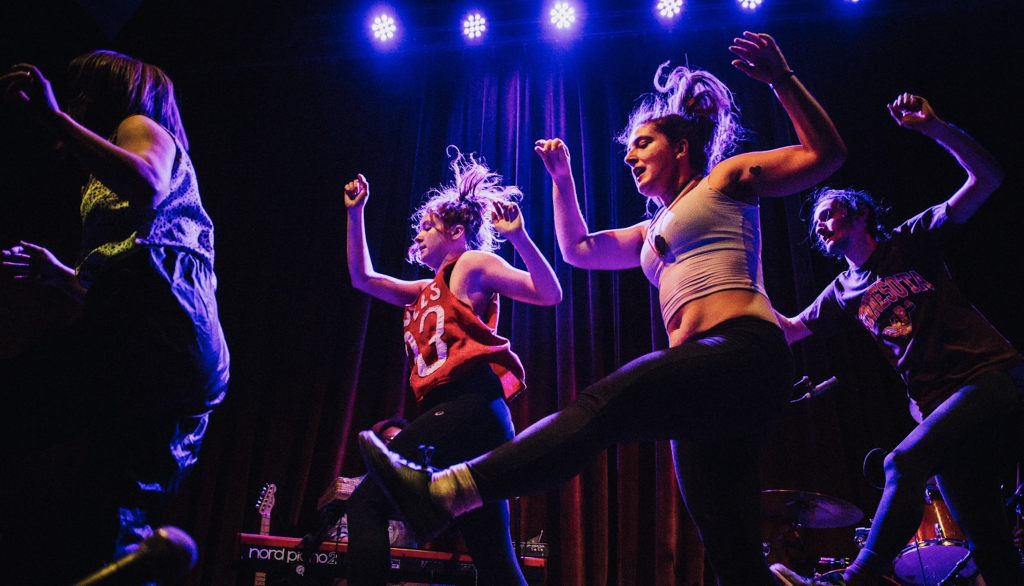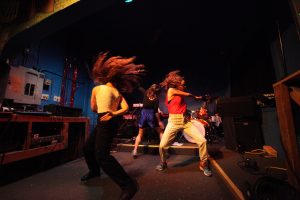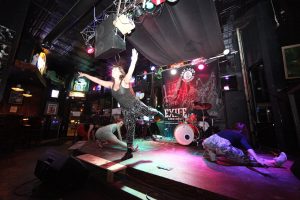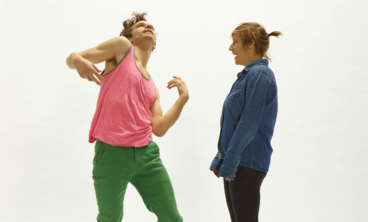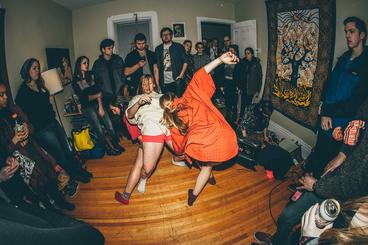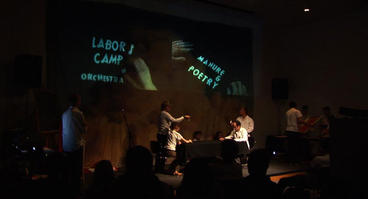I’ve just spent a year sitting on the couch, in a deflated C shape, terribly still, feeding my mammal child. This is a posture I will very likely fill again at an older age, as so many older adults do. I had gotten comfortable, as a body-based artist, being a person who is looked at, knowing the strength of this exposure, the strength of my body. But I am now only a soft surface. Invisible as furniture. And my energy is fugitive. Dancing seems far-fetched. Dance shows are long after bedtime, mine and the small mammal’s.
I watch dance online; viral traps of ballet-trained beauties under water, seniors flossing while assisted by sturdy chairs, and highly edited trailers of friends’ productions. These post-performance compilations are designed to highlight the powerful and flashy moments, outside of time and space, disconnected from the dynamic energy of the live event. I see videography, not choreography.
Researching recent studies in reminiscence therapy for individuals with memory loss, it seems technology is a repeating proposal. Scholars are finding funding for tablets and offering screens exhibiting photos and media from earlier in that individual’s life. Without a study, I know how powerful music can be in triggering memory. I also know how absorbing and immersive my gaze can become when looking at a device. I am cocooned. I notice the sluggishness of my reflexes, my re-embodiment, when I’m looking at my phone and my young toddler is at the edge of the stairs. What if real people were funded to hold these photos, to make conversations that jog the memory, to be present, to make physical contact and connection?
But certain words look good on paper, certain words catch attention (read money). The most nonverbal dances and art are still preceded by language; buzzy blurbs that say things well, or don’t. And, I like to read. I am asking you to just now. But you can’t learn to swim in the library, and YouTube how-to videos turn into rabbit holes.
These experiences—videos, photos, descriptions—aren’t dance shows. They are fake dance shows. I have seen art much nearer to being a real dance show happening right on top of the couch that I am, performed by a still present, tiny human.
Think about that escaped, overlooked marble at the Meg Stuart solos and duets show last month at the Walker. The crowd was beautifully, cooperatively aware of what the tech person—let’s call them a dancer—was not. The whole crowd’s telepathic strength was focused on helping him spot it. Do you remember? The dance community in Minneapolis seems to me to be incredibly active, supportive of so much fellow work. Being present seems a collective value. But there aren’t that many performance spaces, there aren’t that many performance spaces left, it’s nearly manageable to see all the dance. There are more and more condos and there are more and more tablets, but they don’t sweat, or slip, they don’t take you by the hand and lead you across the room, they don’t meet you as a person and remind you of your humanness.
And, there are rehearsals, there are lots and lots of rehearsals. Because dancers love to rehearse? Or dancers love to be together in space, be embodied, be in the company of others while being their most core and original selves. Dancers may increase their cardiovascular endurance or range of motion through rehearsals, or maybe not, but would a gain via art be acknowledged by physical therapists and the medical community if not measured scientifically? And, show descriptions say all sorts of things that audiences may or may not see in the show. The writing may be offering a short unrelated tale or they might be making the impossible attempt to describe that specific sort of unnamable magic that happens when people collect, repeatedly, and move together.
